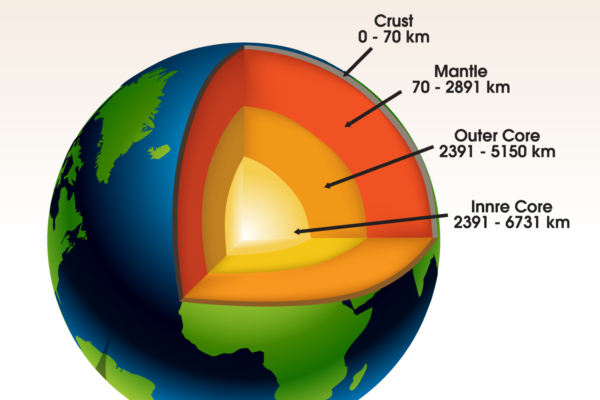Australian National University scientists have made an extraordinary discovery thousands of miles beneath the Earth’s surface: a donut-shaped structure within the liquid core. This mysterious torus structure could provide researchers with new clues to understand how the rotating liquid in the Earth’s core influences the planet’s magnetic field.
“We don’t know the exact thickness of this donut, but we speculate it reaches depths of hundreds of kilometers beneath the core-mantle boundary,” said co-author and ANU geophysicist Hrvoje Tkalčić in a statement.
According to a new paper published on August 30 in the journal Science Advances, scientists reached this conclusion by studying the seismic echoes of earthquakes.
Tkalčić explained that this unique structure has only been discovered now because previous data collected in studies usually came from smaller regions of the Earth’s outer core within an hour of a major earthquake.
“We studied the seismic reverberations in the hours following major earthquakes, providing better coverage,” he added.
The Earth’s outer core is a layer of fluid metal about 1400 miles thick, primarily composed of iron and nickel. Scientists believe that the intense rotation of this iron liquid generates the Earth’s magnetic field. The observed slowdown in rotation in the newly discovered donut structure may offer new insights for exploring the protective magnetic field of the Earth.
“Our discovery is intriguing because the lower velocity within the liquid core suggests higher concentrations of light chemical elements, causing a slowdown in seismic waves. These light elements, along with temperature differences, contribute to stirring the liquid in the outer core,” Tkalčić said.
“There are still many mysteries surrounding the Earth’s outer core, requiring interdisciplinary efforts in seismology, mineral physics, geomagnetism, and geodynamics,” said co-author and ANU seismologist Xiaolong Ma in a statement.
Tkalčić added that maintaining a magnetic field on the Earth’s surface is fundamental for life. He believes this new discovery could “stimulate further research on the magnetic fields of Earth and other planets.”

